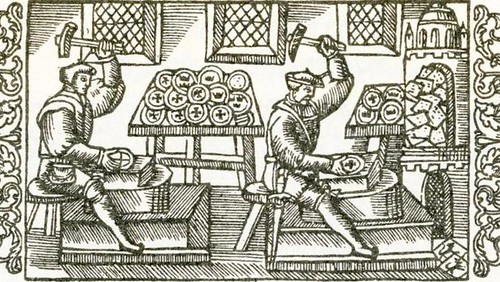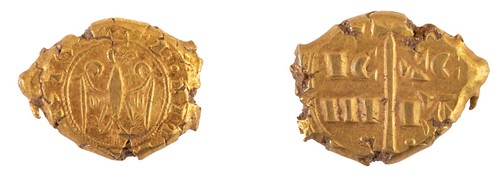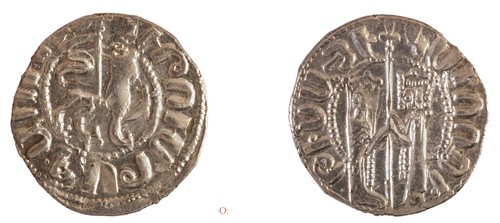
PREV ARTICLE
NEXT ARTICLE
FULL ISSUE
PREV FULL ISSUE
EXHIBIT: MEDIEVAL EASTERN MEDITERRANEAN COINAGEAn new online exhibit is available from the University of Richmond Museums. "A Pound of Whatever Silver He Pleases" features fifty-three coins from the eastern Mediterranean during the thirteenth and fourteenth centuries. Here's the announcement and a few selected coins. Check it out! -Editor  But in these things the money-changer is watchful so that he may buy a pound of whatever silver he pleases according to what returns a better profit to himself rather than to what will redound to the profit of the king - Hubert Hall Coinage was, in the Middle Ages, more than just currency. It was also a source of profit and power. As a result, coins from this period are particularly useful in understanding the interconnectedness of the medieval world and its various conflicts. Combining history and numismatics, this exhibition traces the political and economic developments of the thirteenth and fourteenth century eastern Mediterranean. Through a close examination of 53 unique coins, mostly in silver, from a number of the politically and economically important regional entities during the period, the exhibition utilizes monetary history to tell the story of the Mediterranean at a tumultuous point in its past. 
Two Tari: Friedrich II, der Staufer 1198-1250 The thirteenth and fourteenth centuries in the eastern Mediterranean were ones of profound shift for the region, which is reflected in the coinage. The conquest of Constantinople in 1204 by the soldiers of the Fourth Crusade marks the opening date of this study, as western European influence in the area rose to its height as a result. However, less than a century later, the Latin presence in the East was diminished through the fall of Acre and the loss of the Crusader States in 1291. Despite these political setbacks, the West still had a deep connection to the economy of the eastern Mediterranean, evident in the coinage of the time. The slow collapse of the Byzantine Empire, from the fall of Constaninople in 1204, to the recapture of the former capital in 1261, and even its harassment from the rising Turkish power in the region, materializes during this time. While these climatic events can be traced in other areas of study, the coinage of the Byzantine Empire from the period, while scant, informs on the profound impact of these calamities on the Empire. But, particularly for the Muslim world, this was a period of invasion. The entrance of the Mongols onto the political stage, as well as the decline and destruction of traditionally powerful political entities during these two centuries, marks a dramatic shift in the power structure of the Middle East. These changes are also made clear through the coinage of the period. 
Tram: Het'um I and Zebel, Hetoumid 1226-1270 Coinage is often neglected when determining the history of a place or a power despite its real historical impact and its ability to formulate new narratives of the past. Coinage speaks on issues of politics or economy because of its role in trade, power projection, and art. Tracing the changes of this region through its coinage offers a fresh look at the eastern Mediterranean in the thirteenth and fourteenth centuries. While this collection does not claim to be all encompassing, these representative examples can shed light on the history of the region. This exhibition was organized by the University of Richmond Museum, and curated by Mike Laposata, ‘20, History and Arabic Studies major and 2019-2020 Collections Assistant, University Museums with assistance from David Hershey, Assistant Collections Manager, University of Richmond Museums. This exhibition is organized in honor of Joseph S. Laposata. 
Six Dirhams: Öljeitü, Ilkhanid 1304-1316 To read the complete article, see:
Wayne Homren, Editor The Numismatic Bibliomania Society is a non-profit organization promoting numismatic literature. See our web site at coinbooks.org. To submit items for publication in The E-Sylum, write to the Editor at this address: whomren@gmail.com To subscribe go to: https://my.binhost.com/lists/listinfo/esylum All Rights Reserved. NBS Home Page Contact the NBS webmaster 
|